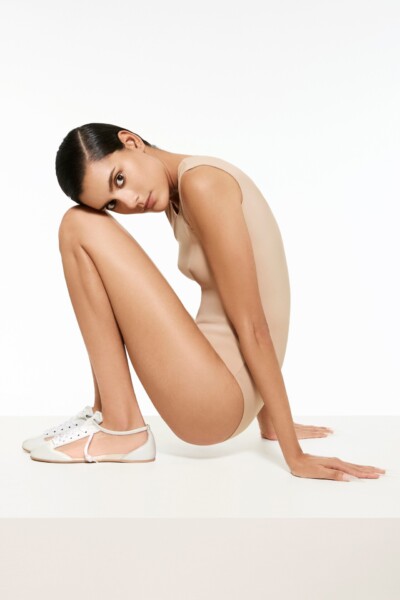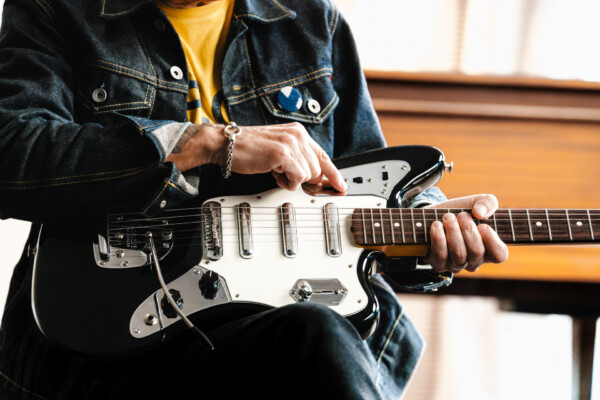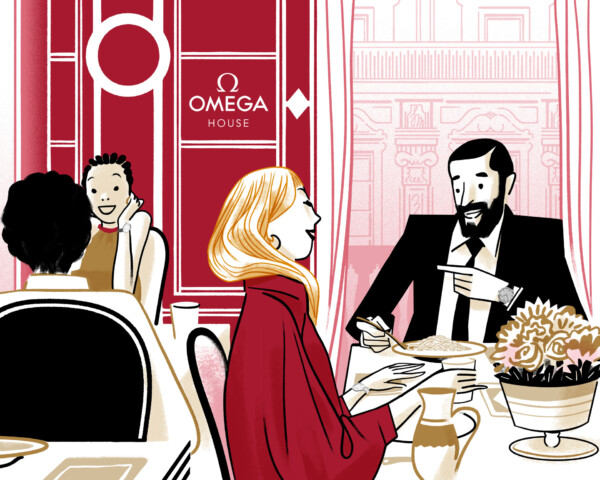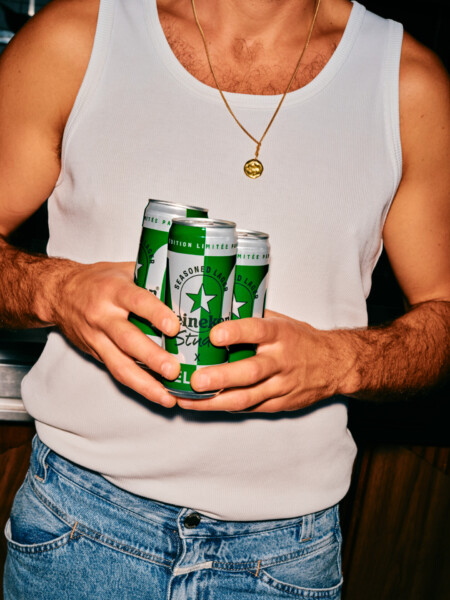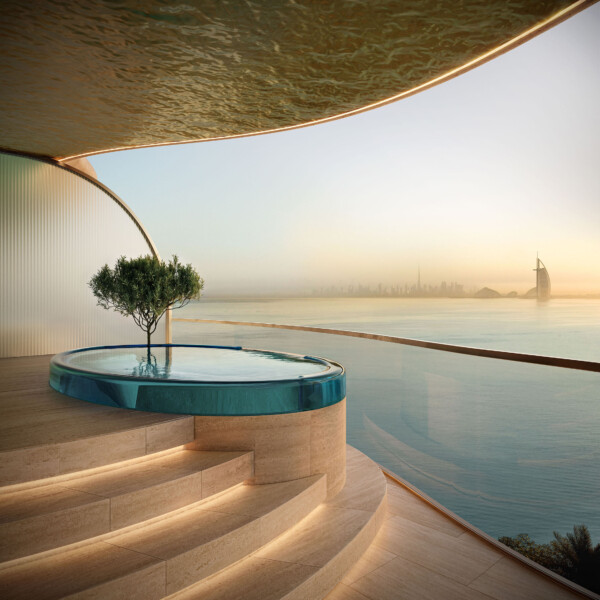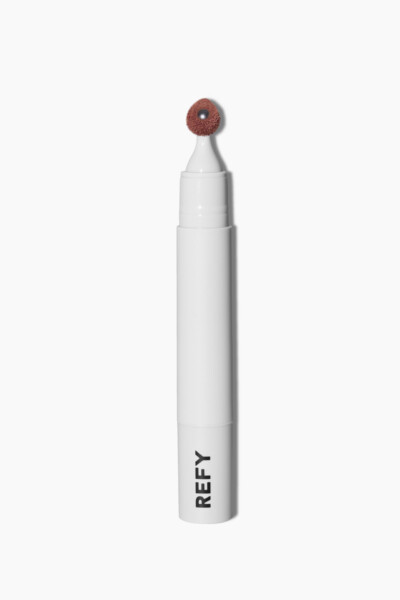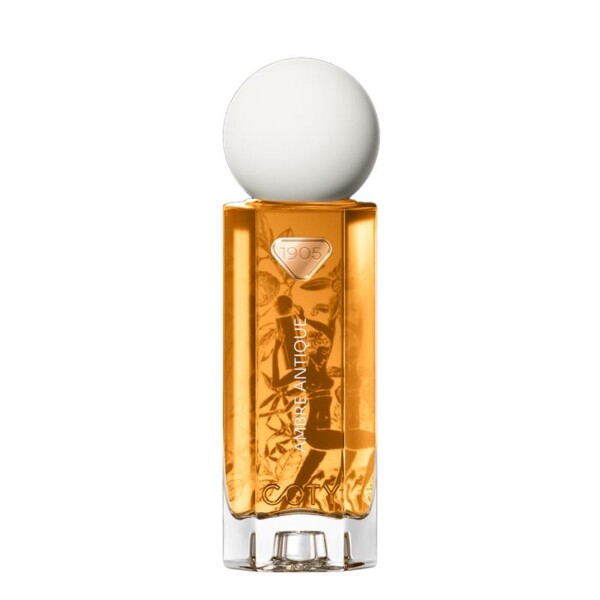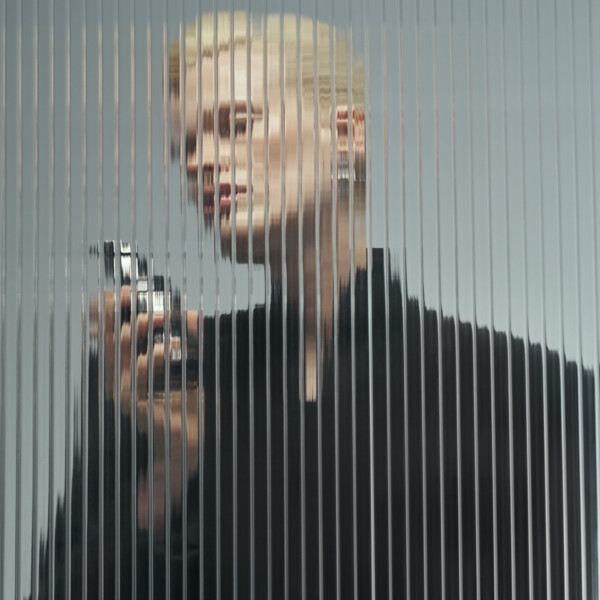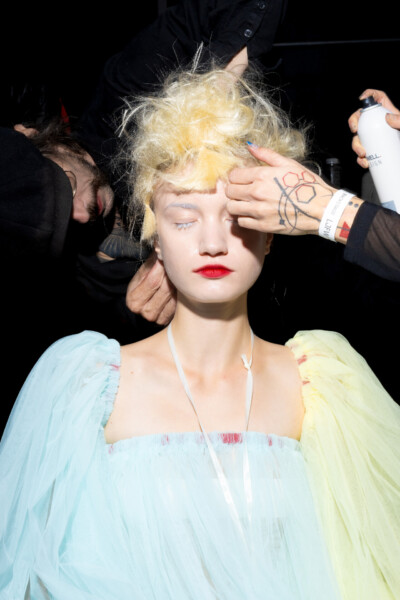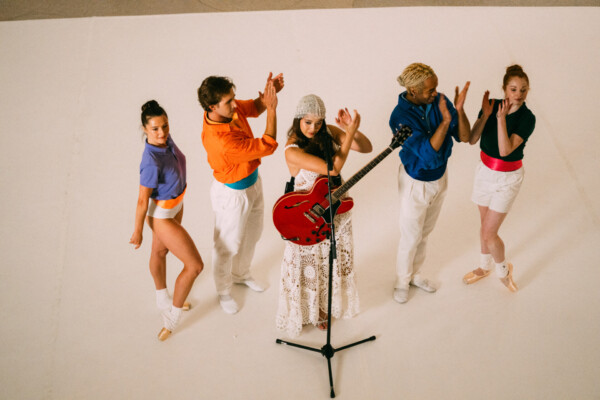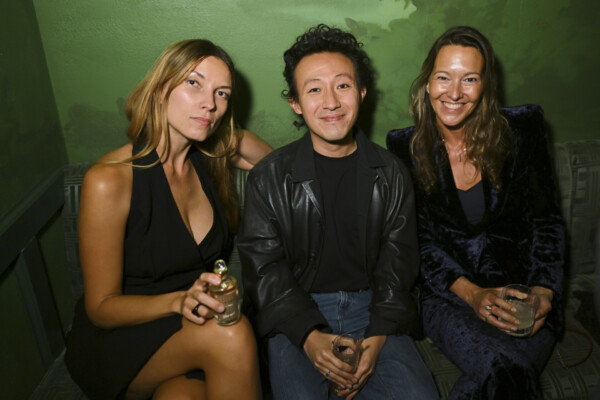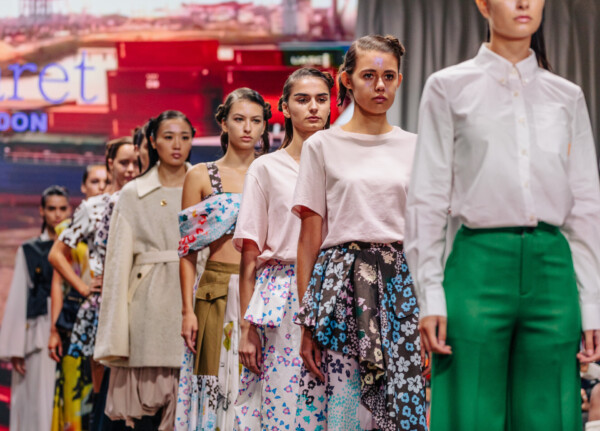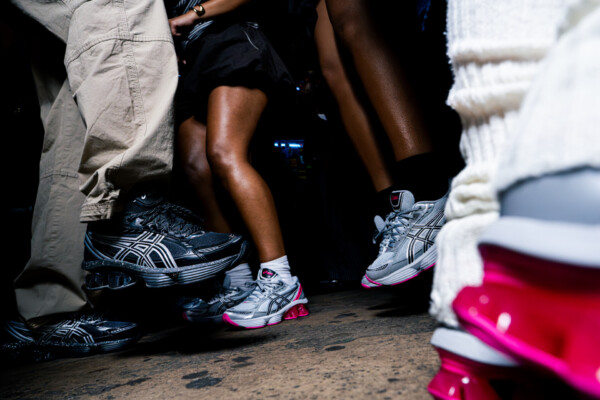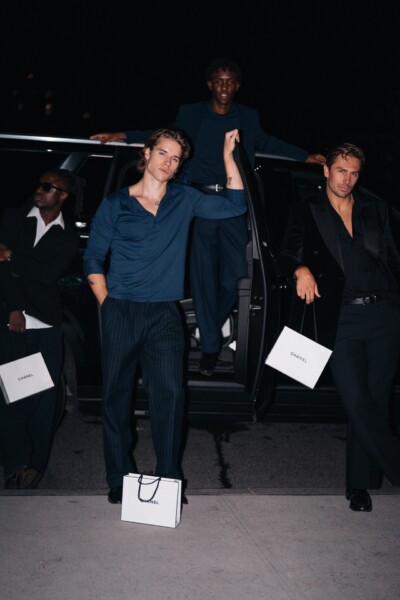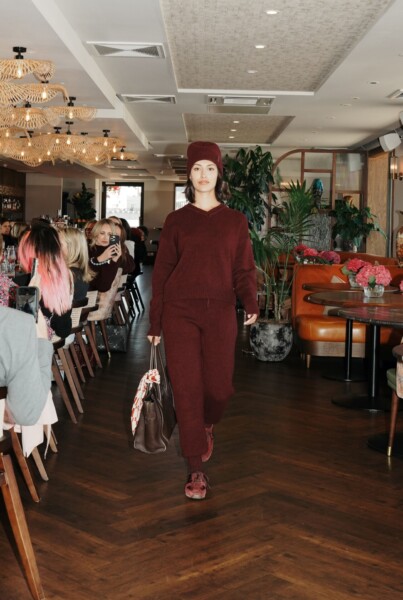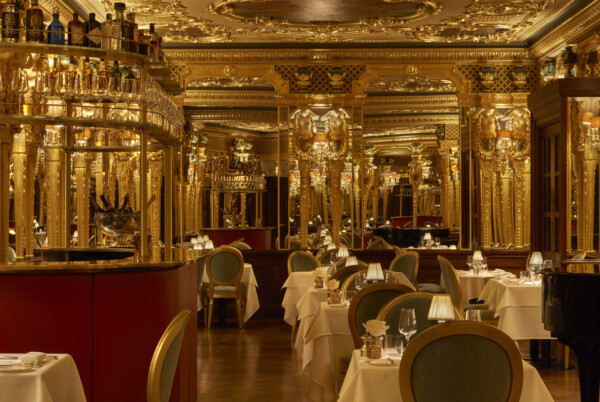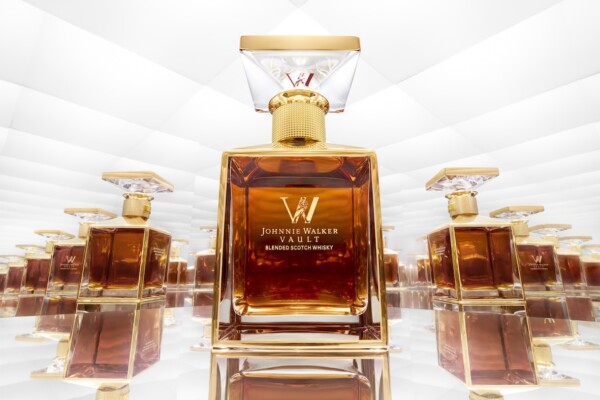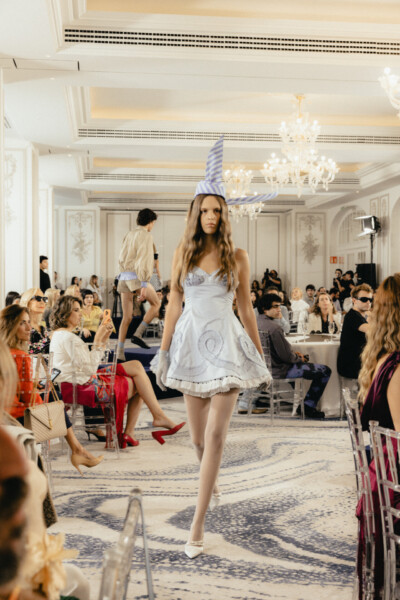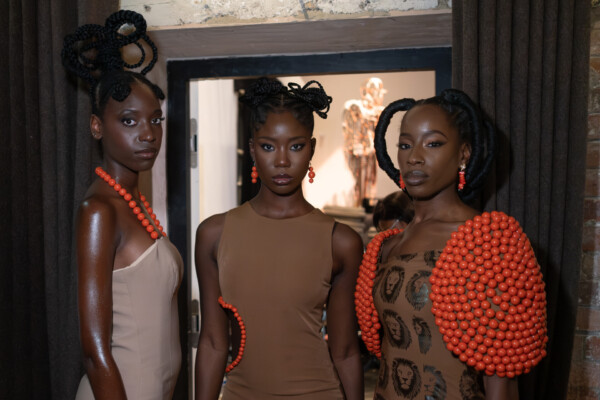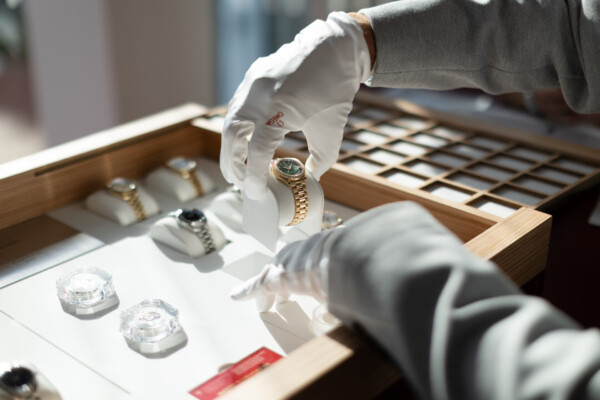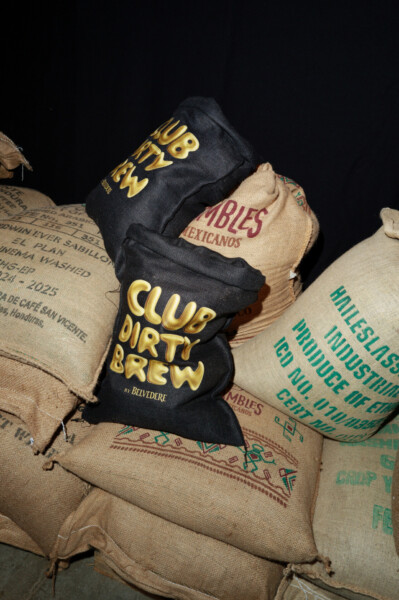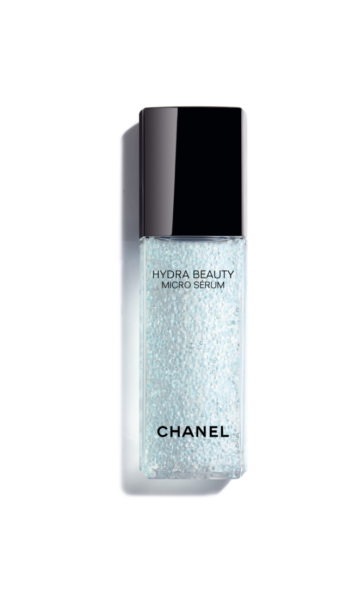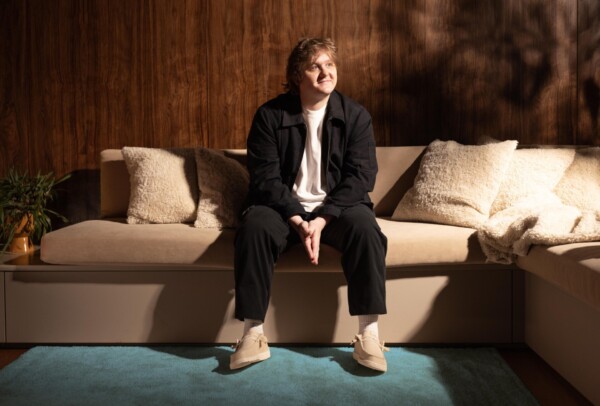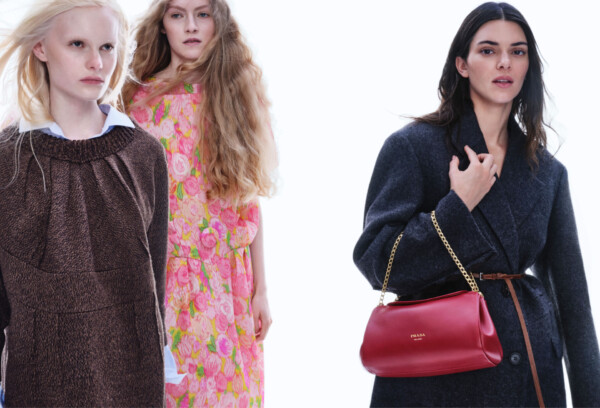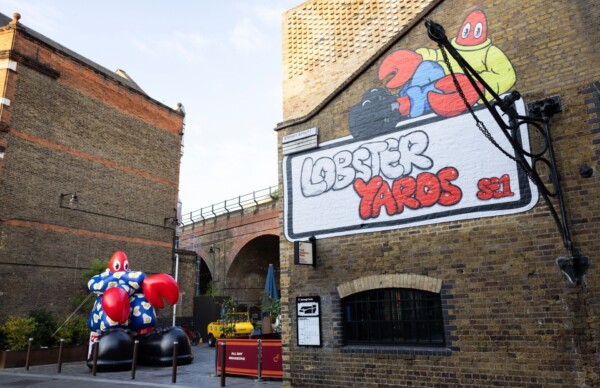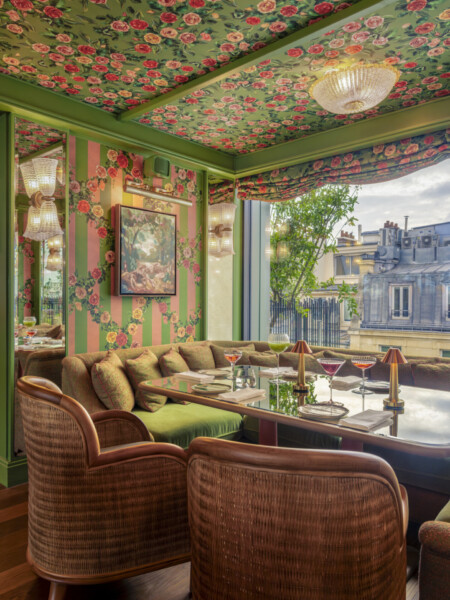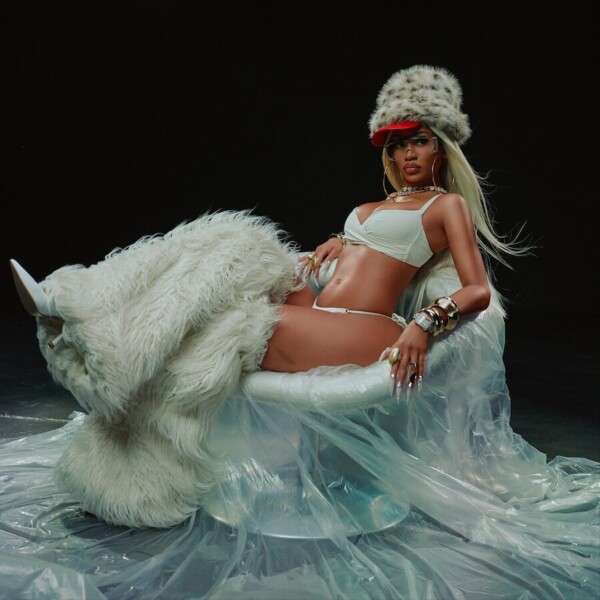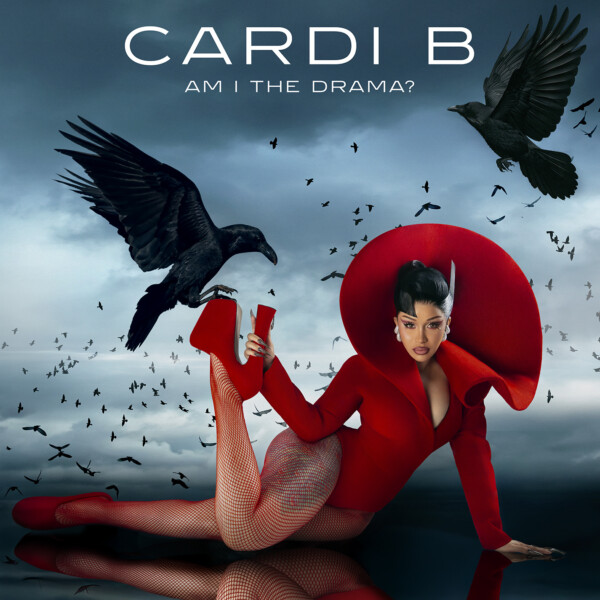By Phillza Mirza, AW25
Where Fabric Becomes Faith: FJU Talents Bring Taiwan’s Textural Storytelling to London Fashion Week
At Fashion Scout this season, FJU Talents presented a masterclass in quiet innovation. Four emerging designers, Chih-Wen Kuo, Juan-Juan Xu, Yi-Zhen Lin and Ying Chu, transformed the runway into a dialogue between craft and emotion, weaving Taiwan’s cultural memory into modern silhouettes. From knitwear that maps time and loss to sculptural forms that explore connection, each collection offered a distinct voice within a shared language of precision, introspection, and poetic design. Together, they marked a defining moment for Taiwan’s next generation of designers, one rooted in heritage, yet entirely of the now.
Chih-Wen Kuo (@wayne_knitted) – Wayne Knitted, “Sedimentation”
As a specialist in knitwear, Chih-Wen Kuo aims to challenge conventional perceptions of knitting, delivering garments that are simultaneously wearable and artistic. His collection, Sedimentation, reimagines the ancient act of knotting as a contemporary metaphor for memory and time, seeking to convey a modern, effortless, and street-inspired aesthetic through destruction and reconstruction.
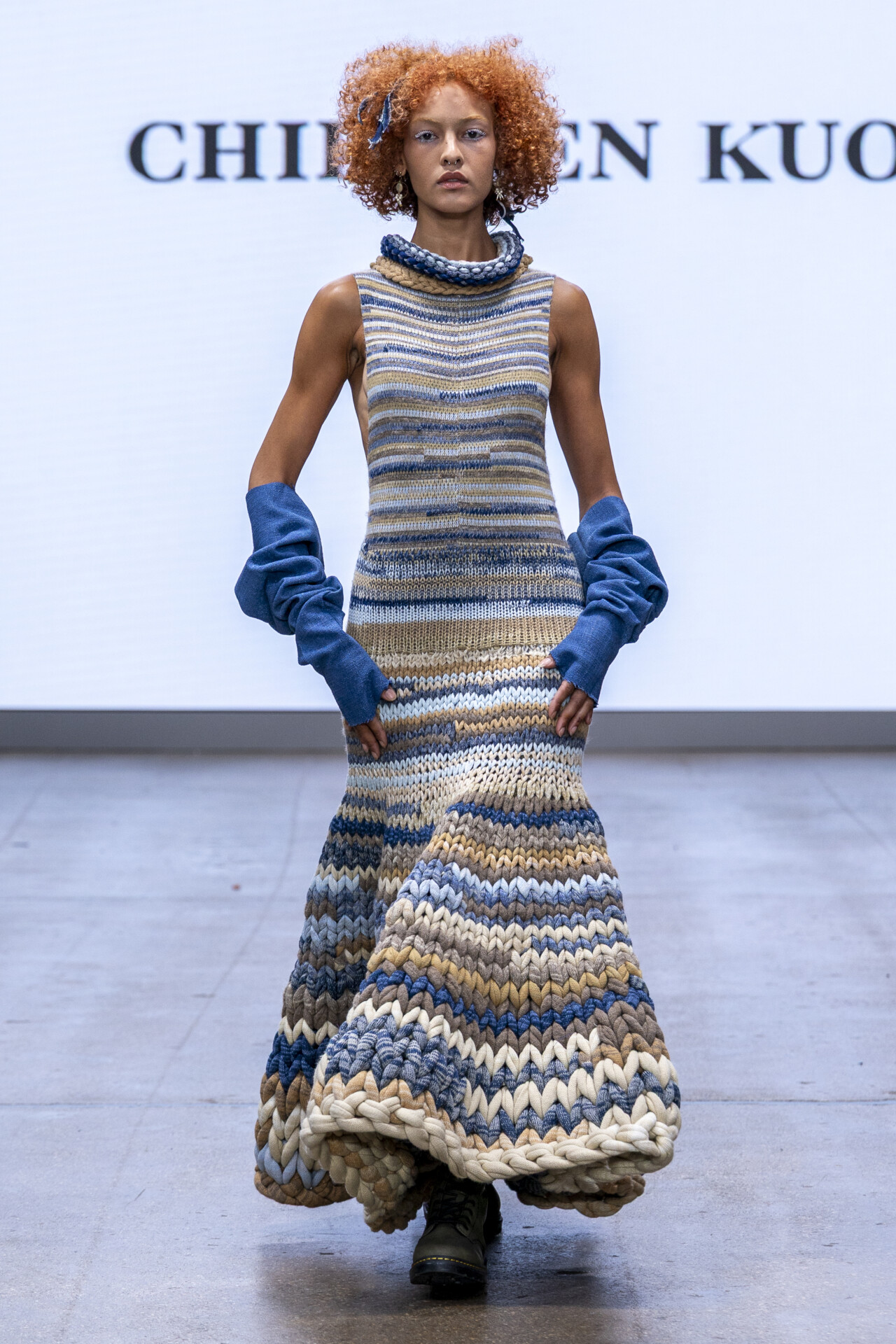
New Inn Yard, London, 22nd September 2025. A model walks in the FJU Talents Catwalk show. ©Chris Yates/ Chris Yates Media
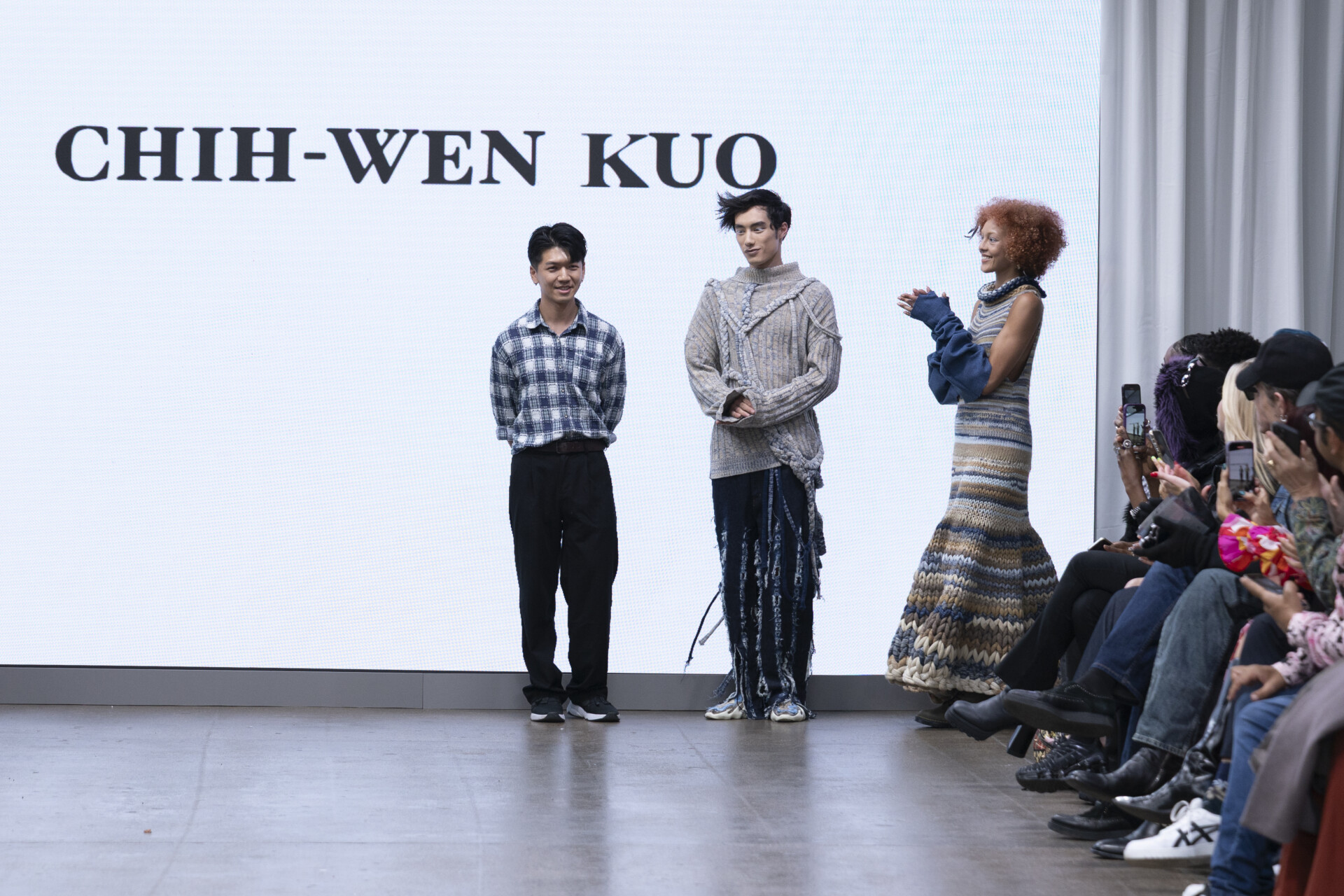
New Inn Yard, London, 22nd September 2025. A model walks in the FJU Talents Catwalk show. ©Chris Yates/ Chris Yates Media
PM: How did it feel to present your collection at Fashion Scout during London Fashion Week, and what does this platform mean for you personally?
CK: It is a great honor to present my new collection at Fashion Scout. This experience has rekindled my deep love for fashion. I believe that the ability to create and be seen is a blessing.
PM: FJU Talents highlights Taiwan’s emerging voices. How do you see your collection contributing to a global conversation about Taiwanese fashion?
CK: There is an abundance of hidden talent in Taiwan. I hope to encourage more people to embrace creativity and to showcase our abilities to the world.
PM: What emotions or experiences did you hope the audience would take away from seeing your work on the runway?
CK: As a designer specializing in knitwear, I aim to challenge the conventional perceptions of knitting, allowing people to experience the unique beauty of woven structures. I hope to demonstrate that garments can be both wearable and artistic at the same time.
PM: Collaboration and mentoring are central to FJU Talents. Did guidance from alumni, peers or mentors shape your collection in any way?
CK: My team has helped me refine my creative process by identifying what’s essential. The mutual learning and constructive critiques have been incredibly valuable to me.
PM: Beyond this showcase, what’s the next step for you and your label? Where do you see your design living in the wider fashion world?
CK: Currently, I run a knitwear studio in Taipei, supporting other designers in using knitting as a medium for expressing their ideas. I also hope to help the general public understand the fashion industry through knitting, and to find healing in the process.
PM: Your collection interprets knots and stitches as metaphors for memory and time. How did you translate that idea into specific textures or silhouettes?
CK: In the beginning, I used spontaneous knitting as a way to spark imagination, and from those associations, I looked for similarities between the concepts and the act of knitting itself.
PM: Sedimentation recalls ancient practices of recording with knotted cords, what drew you to this historical reference, and how did you modernise it?
CK: The idea of tying knots as a way to record thoughts has become a personal belief—I see every knot and stitch as something that can carry meaning.
PM: Many of your pieces appear sculptural, almost stone-like. Was there a tension between wearability and artistry in developing them?
CK: Through destruction, deconstruction, and reconstruction, I believe knit fabrics can be reimagined to convey a more contemporary, effortless, and street-inspired aesthetic.
PM: As someone who has also led a yarn brand, how do material innovation and storytelling intersect in your design process?
CK: Wearability and artistry have always been key themes in my knitwear journey. I don’t see them as opposites; instead, I enjoy exploring the grey areas between the two.
Juan-Juan Xu (@juanpak.o_studio) – juanpak.o, “Inter-Shadow”
Juan-Juan Xu’s label, juanpak.o, is founded on the concept of “packing up creativity,” translating personal expression into tangible, innovative designs. Her collection, Inter-Shadow, uses sculptural silhouettes and shifting patterns to explore the dynamics of distance and connection between people in the contemporary world.
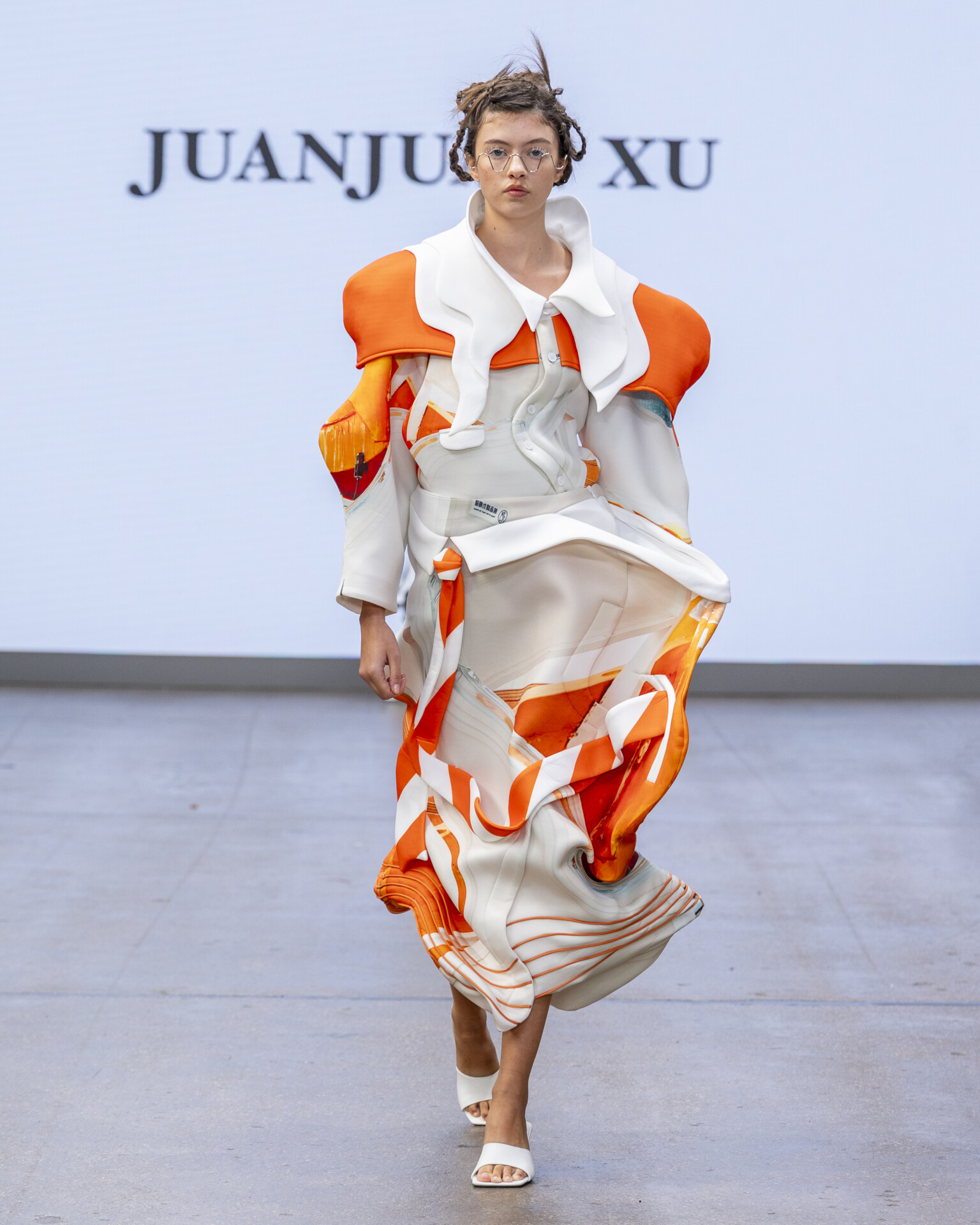
New Inn Yard, London, 22nd September 2025. A model walks in the FJU Talents Catwalk show. ©Chris Yates/ Chris Yates Media
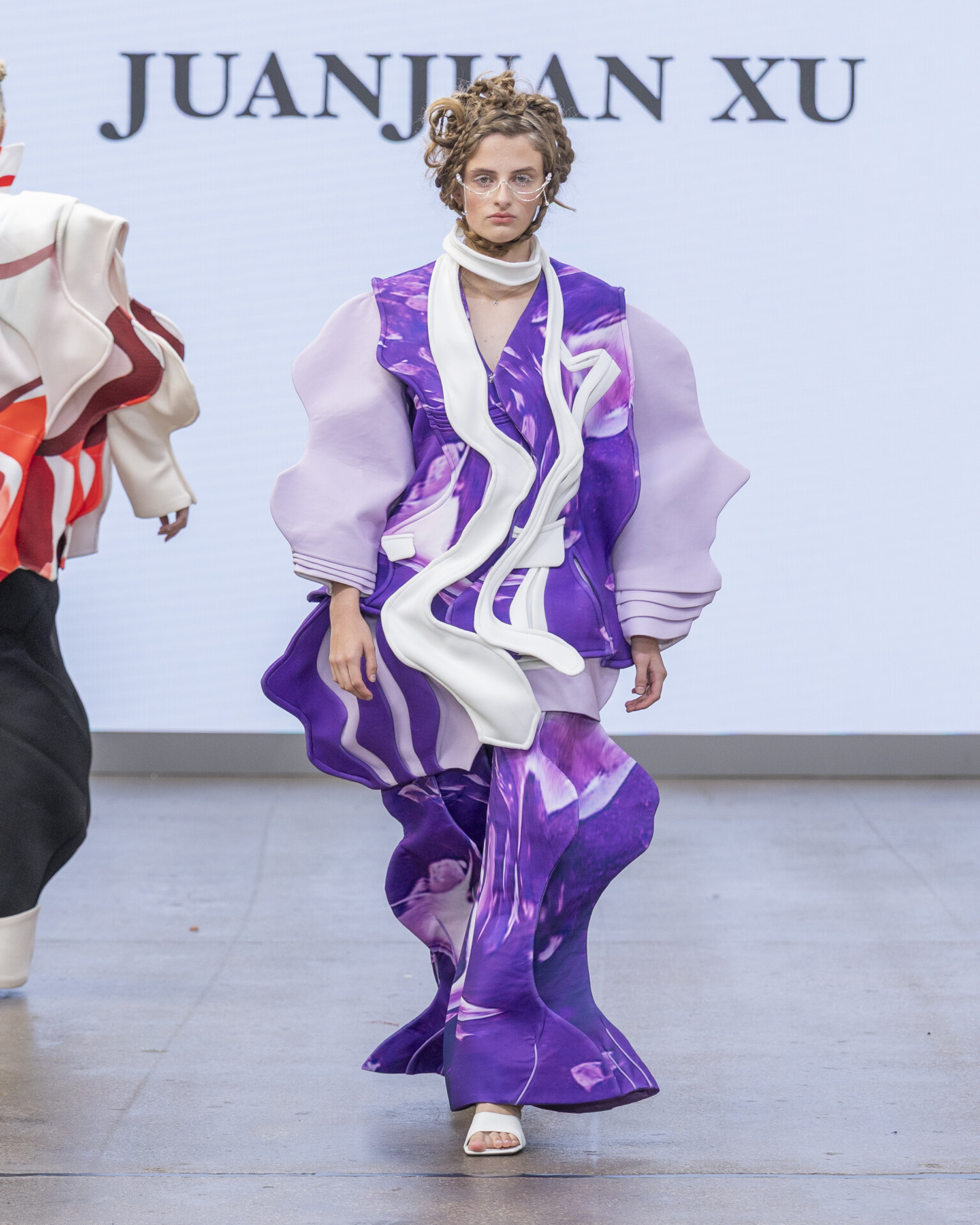
New Inn Yard, London, 22nd September 2025. A model walks in the FJU Talents Catwalk show. ©Chris Yates/ Chris Yates Media
PM: How did it feel to present your collection at Fashion Scout during London Fashion Week, and what does this platform mean for you personally?
JX: It was an incredible honor to present my collection on the stage of Fashion Scout. This opportunity was both rare and precious to me, and I see it as a great recognition and encouragement for my work. I truly treasure this experience.
PM: FJU Talents highlights Taiwan’s emerging voices. How do you see your collection contributing to a global conversation about Taiwanese fashion?
JX: My work reflects the openness I experienced while studying in Taiwan—an environment that values both tradition and experimentation. I hope my collection adds to the global narrative of Taiwanese fashion as diverse, innovative, and culturally connected.
PM: What emotions or experiences did you hope the audience would take away from seeing your work on the runway?
JX: I hope the audience could sense the invisible tension between people through the stretched silhouettes and patterns. More than just watching a fashion show, I wanted them to reflect on their own connections with others and with society.
PM: Collaboration and mentoring are central to FJU Talents. Did guidance from alumni, peers or mentors shape your collection in any way?
JX: Yes, their feedback sharpened my vision. Conversations with mentors and peers helped me balance concept with wearability, making the collection more coherent.
PM: Beyond this showcase, what’s the next step for you and your label? Where do you see your design living in the wider fashion world?
JX: I aim to develop juanpak.o as a label that unites creativity, emotion, and innovation, where fashion becomes a medium of storytelling and cultural reflection.
PM: Inter-Shadow explores distance and connection between people. How did you reflect these themes in silhouette and pattern shifts?
JX: The silhouettes were stretched based on the imagery of people moving from one point to another, capturing that dynamic motion. Some patterns come from blurred or elongated traces of human interaction, while others simulate crowd movement in different scenes. Together, these shifts echo how distance and connection constantly reshape our relationships.
PM: Your brand embodies “packing up creativity.” What personal inspirations did you want to unpack in this debut?
JX: Creativity has always been essential to my work. In this collection, I unpacked the idea of people in motion—how their movements form stretched or fleeting images—and translated it into both silhouettes and patterns. It’s my way of turning everyday observation into tangible design.
PM: The collection urges a return to genuine human connection, did you intend for the garments themselves to become conversation pieces?
JX: I see clothing not just as personal expression but as a medium of dialogue. Through these designs, I hope people engage not only visually but also emotionally, sparking reflection and conversation about our connections in today’s world.
PM: What role did your Taiwanese heritage play in shaping the sculptural direction of Inter-Shadow?
JX: My experience studying in Taiwan exposed me to diverse cultural perspectives and creative approaches. This environment broadened my vision and encouraged me to break boundaries in design, which is reflected in the sculptural direction of Inter-Shadow.
Yi-Zhen Lin (@ejen_studio_) – E.JEN, “Vivid Swirl”
Yi-Zhen Lin’s newly founded brand, E.JEN, is committed to creating pieces that balance structure and emotion, offering a free and diverse fashion language. Her collection, Vivid Swirl, celebrates the beauty found within imperfection using kaleidoscopic color blocking and focusing on the interplay of softness and strength within the female form.
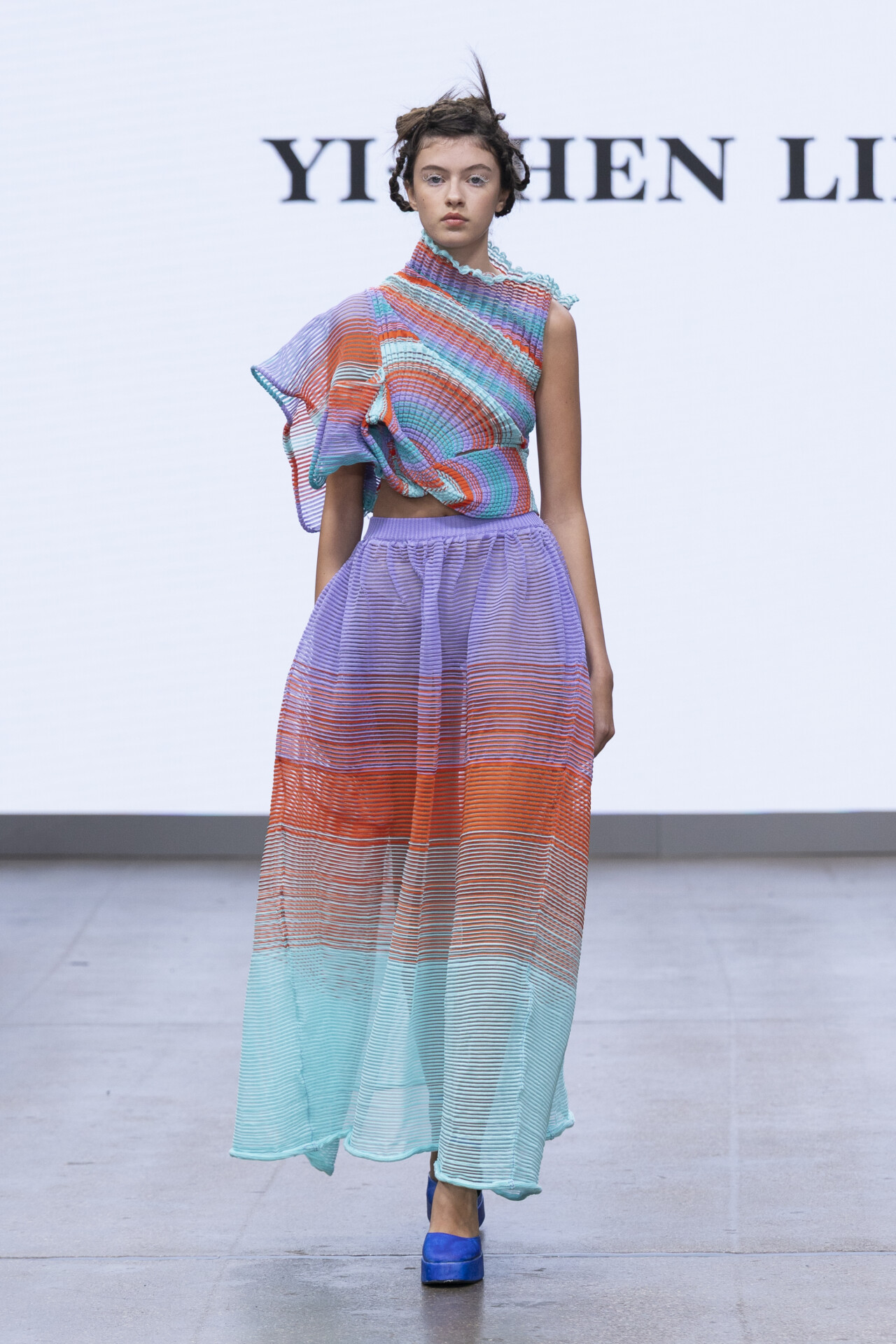
New Inn Yard, London, 22nd September 2025. A model walks in the FJU Talents Catwalk show. ©Chris Yates/ Chris Yates Media
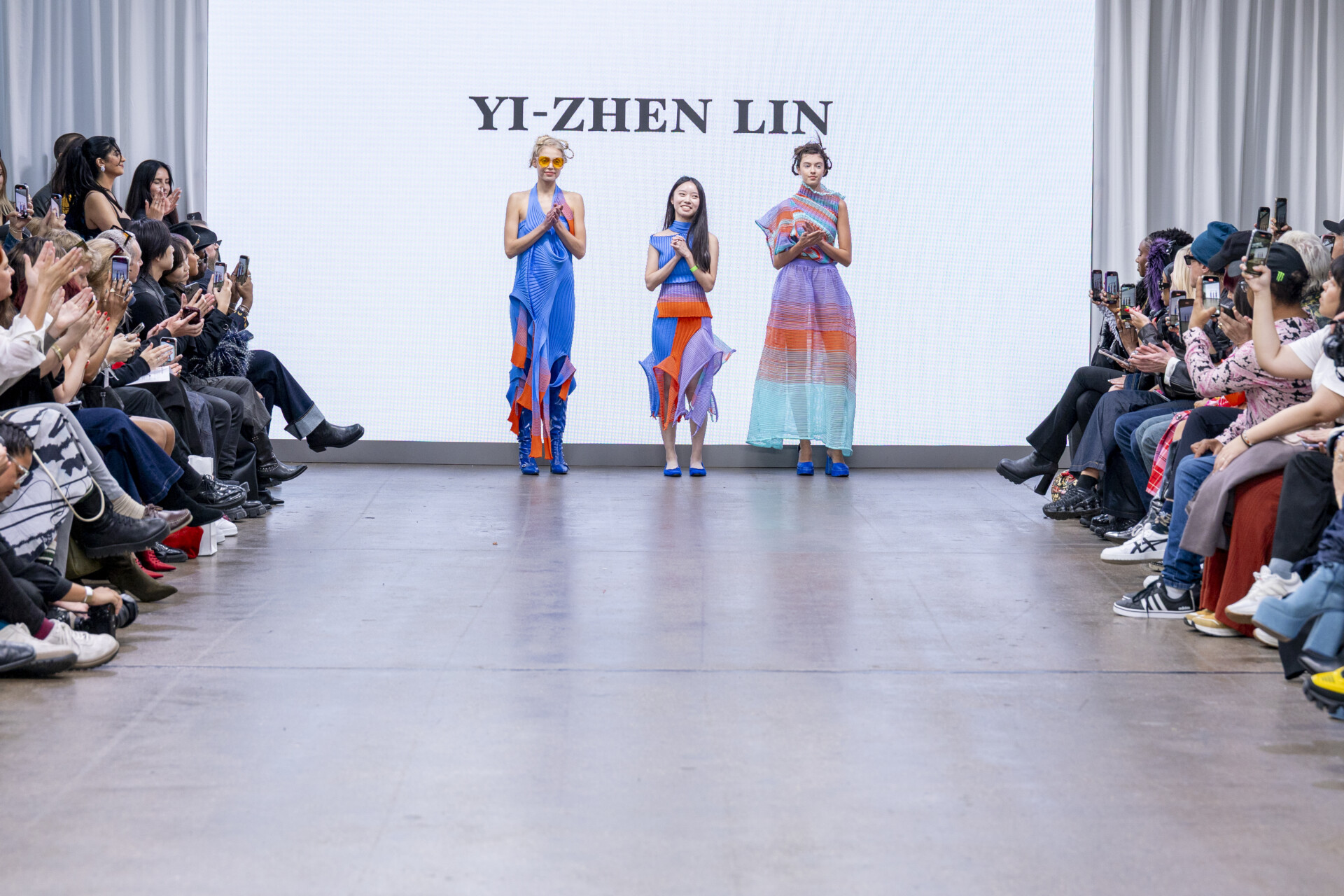
New Inn Yard, London, 22nd September 2025. A model walks in the FJU Talents Catwalk show. ©Chris Yates/ Chris Yates Media
On finding beauty in imperfection and emotional expression:
PM: How did it feel to present your collection at Fashion Scout during London Fashion Week, and what does this platform mean for you personally?
YL: Presenting my collection at Fashion Scout during London Fashion Week was both exciting and humbling. It represents an important step in sharing my vision with an international audience.
PM: FJU Talents highlights Taiwan’s emerging voices. How do you see your collection contributing to a global conversation about Taiwanese fashion?
YL: My collection draws from Taiwanese culture and aesthetics. Through contemporary design and craftsmanship, I hope to showcase Taiwan’s creativity and contribute to a global conversation about fashion.
PM: What emotions or experiences did you hope the audience would take away from seeing your work on the runway?
YL: I wanted the audience to feel a sense of freedom, movement, and the beauty that exists within imperfection.
PM: Collaboration and mentoring are central to FJU Talents. Did guidance from alumni, peers or mentors shape your collection in any way?
YL: Guidance from mentors and peers helped me clarify my brand’s direction and encouraged me to push beyond my own design boundaries.
PM: Beyond this showcase, what’s the next step for you and your label? Where do you see your design living in the wider fashion world?
YL: Moving forward, I aim to grow E.JEN as a brand, explore international collaborations, and create pieces that live not just on the runway but in everyday life.
PM: Vivid Swirl uses ribbed knits and kaleidoscopic colour blocking. What was your process in capturing that sense of movement?
YL: I explored ribbed knits and restructured color blocks to create a sense of swirling motion, allowing the garments to feel dynamic even when still.
PM: Your designs balance softness and strength. How do you want wearers to feel when inhabiting that duality?
YL: I want wearers to feel both comforted and empowered, embracing the balance between softness and strength.
PM: Misaligned structures often suggest imperfection, why was that aesthetic important to you in this collection?
YL: Misaligned structures reflect life’s imperfections. They challenge traditional ideas of beauty and celebrate individuality.
PM: E.JEN was recently founded (2025). What vision are you setting for the brand’s identity moving forward?
YL: As a newly founded brand, E.JEN will focus on balancing structure and emotion, creating designs that are artistic yet wearable, and expressing a free, diverse fashion language.
Ying Chu (@chuoru.studio) – Chuoru, “Liminal Forms”
Ying Chu views her knitwear practice as a bridge between Taiwan’s cultural context and her current work in London. Her label, Chuoru, translates deeply personal experiences and Taiwanese farewell rituals into abstract textile forms, using knitwear as a language that connects memory, ritual, and the body.
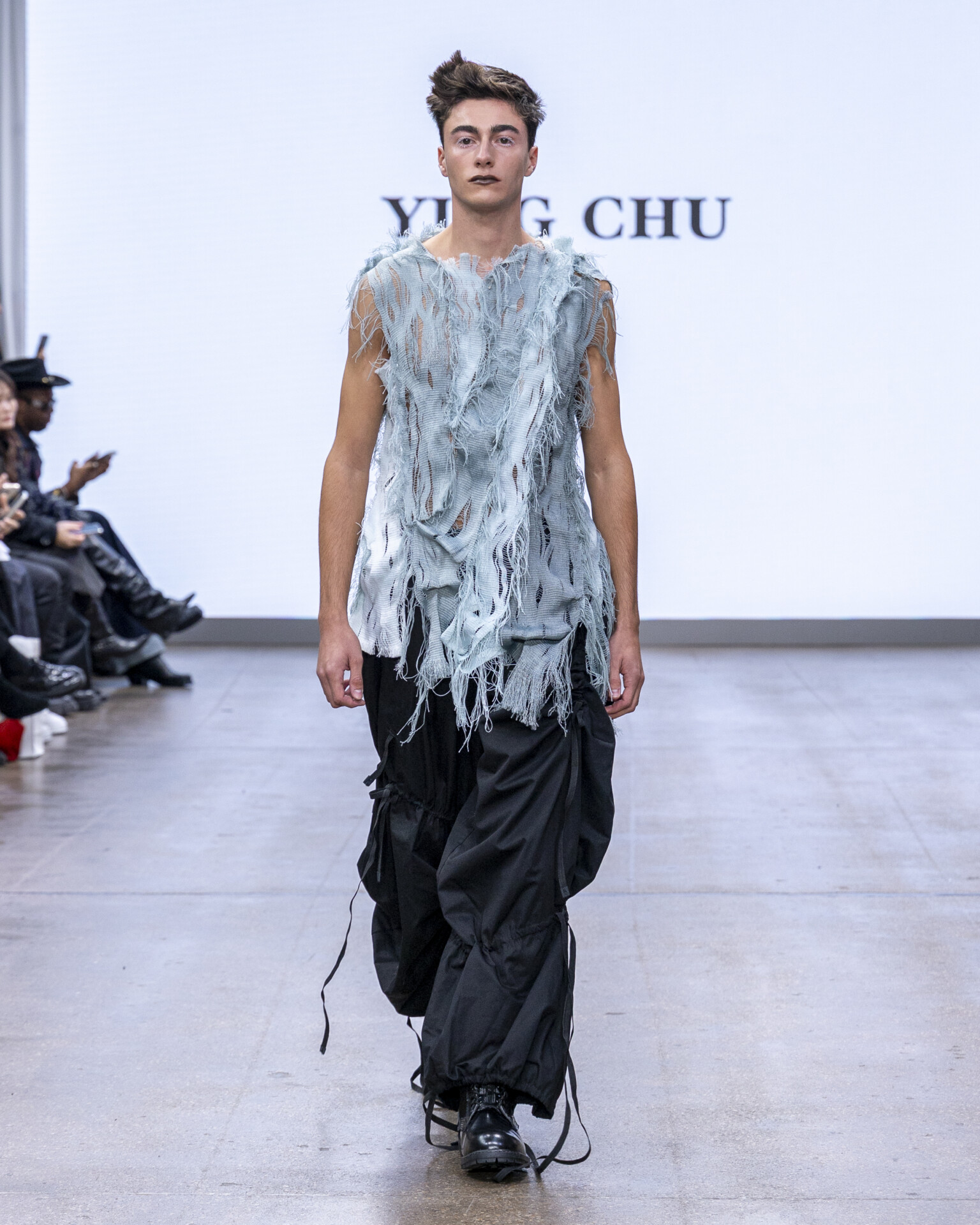
New Inn Yard, London, 22nd September 2025. A model walks in the FJU Talents Catwalk show. ©Chris Yates/ Chris Yates Media
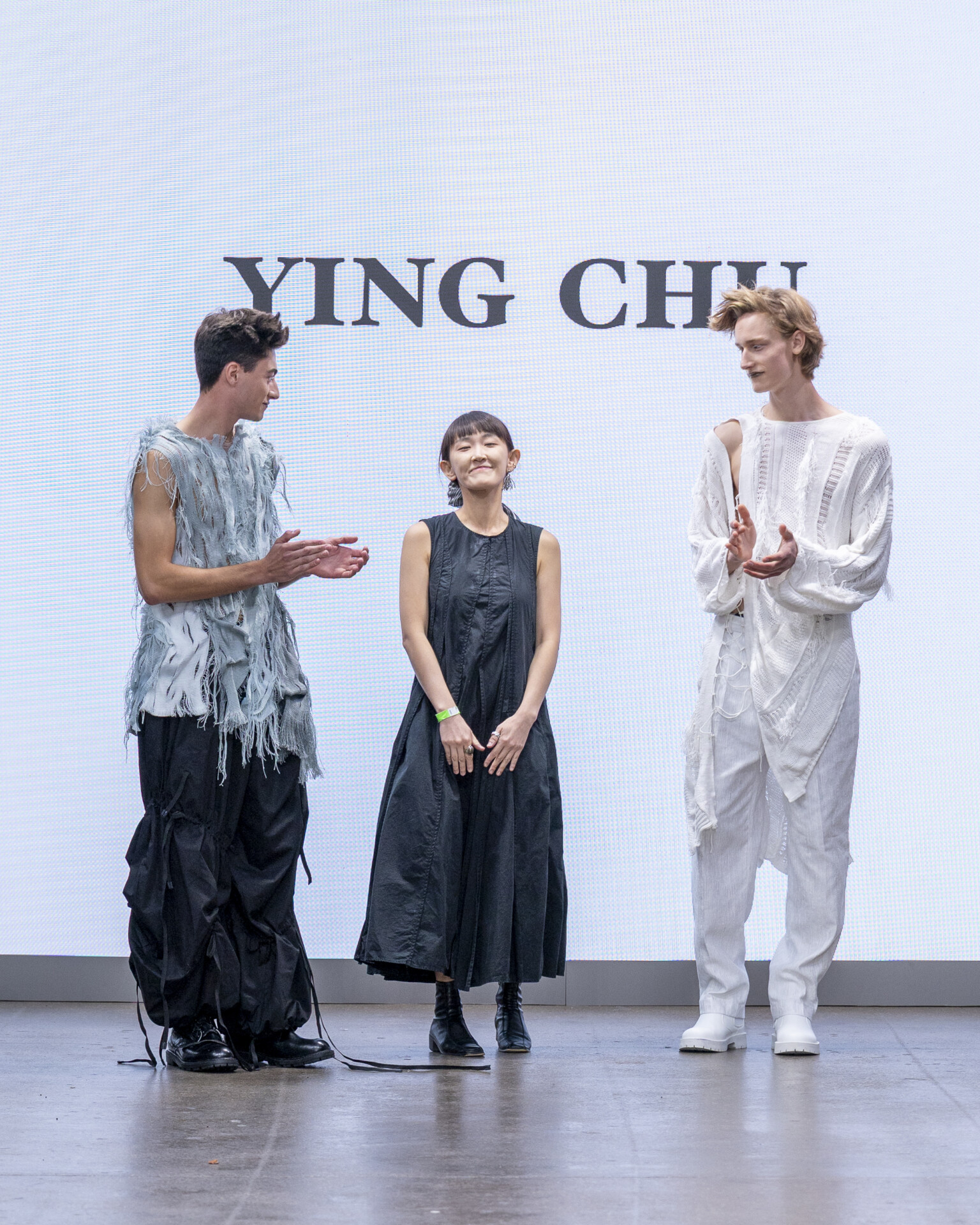
New Inn Yard, London, 22nd September 2025. A model walks in the FJU Talents Catwalk show. ©Chris Yates/ Chris Yates Media
On loss, renewal, and garments as cultural vessels:
PM: How did it feel to present your collection at Fashion Scout during London Fashion Week, and what does this platform mean for you personally?
YC: It was an honour to show my collection with Fashion Scout during London Fashion Week. Being part of this platform marks an important milestone, not only for myself but also for the growth of my studio, chuoru. For me, it’s a recognition that my work can stand on an international stage and be part of a wider conversation in fashion.
PM: FJU Talents highlights Taiwan’s emerging voices. How do you see your collection contributing to a global conversation about Taiwanese fashion?
YC: I grew up within Taiwan’s cultural context before continuing my practice in London, and I see my work as a bridge between these worlds. Rather than directly placing symbols on my collection, I translated cultural perspectives into visual forms that speak universally. I believe this contributes a distinct voice from Taiwan, one that expands the dialogue by offering another way of understanding presence, absence, and renewal.
PM: What emotions or experiences did you hope the audience would take away from seeing your work on the runway?
YC: Loss is a universal human experience, but in Taiwanese culture, it is often seen as a passage rather than an ending. With Liminal Forms, I hoped to offer a perspective where absence is not only about grief but also about transition, peace, and transformation. I wanted the audience to feel the journey of scattering, drifting, and gathering again.
PM: Collaboration and mentoring are central to FJU Talents. Did guidance from alumni, peers or mentors shape your collection in any way?
YC: The most valuable part of FJU Talents was the dialogue, sharing perspectives with peers and alumni helped me see how diverse interpretations can be, even from a similar background.
PM: Beyond this showcase, what’s the next step for you and your label? Where do you see your design living in the wider fashion world?
YC: This show marks the beginning of the next phase of chuoru. I will continue to expand chuoru in the future, developing garments, knitwear and textile as a language that connects memory, ritual, and the body. I’m looking towards residencies and cross-disciplinary collaborations, exploring how my work can live not only on the runway but also in cultural and artistic spaces. For me, fashion and textiles are a medium that can move between contexts while carrying both narrative depth and cultural resonance.
PM: Liminal Forms draws on cultural imagery of the soul’s passage after death. How did you approach translating such intangible themes into knitwear?
YC: I divided the soul’s journey into stages: scattering, drifting, and ascension, and translated them into structures and surfaces. Through manipulating density and proportion in black, grey, and white, I created a progression across the collection. The usage of knitted stitches became a metaphor for a flowing soul gathering into a new form, turning an abstract idea into a visible form.
PM: The use of black, grey, and white gradients creates an almost dissolving effect. Was evoking presence and absence your main intention?
YC: Yes. The gradients were not just an aesthetic choice, but a way of embodying transition. Black, grey, and white became states of dissolution and reappearance, reflecting the fluidity of the soul’s movement. My intention was to let the garments carry both presence and absence simultaneously, allowing the viewer to feel the tension between what is fading and what endures.
PM: You studied at both Fu Jen and the Royal College of Art. How do these different environments shape the storytelling in your textiles?
YC: Fu Jen grounded me in the discipline of textile and knitwear, understanding construction, technique, and the precision of textile development. RCA, on the other hand, pushed me to expand those tools into narrative and cultural storytelling. They shaped not just what I make but how I position garments as a medium: technically rigorous, yet also conceptually layered. This combination defines the unique language of my practice today.
PM: Your practice often engages ritual and personal memory. What rituals or moments specifically influenced this collection?
YC: The collection was shaped by the quiet atmosphere of farewell rituals I experienced growing up in Taiwan. In those moments, loss is marked not only by absence but also by the belief in transformation, that the soul moves on to another life. I wanted the garments to hold that duality: a sense of fading away, yet also of being blessed, renewed, and carried forward.
From the quiet contemplation of knitwear that maps memory and loss, to the energetic study of human connection and the celebration of imperfection, these four FJU talents have showcased not just technical prowess, but a profound commitment to using fashion as a medium for cultural dialogue. Their successful debut marks an important milestone for each studio and affirms Taiwan’s position as a source of diverse, innovative, and conceptually layered design. These emerging voices are officially in their next phase, ready to continue expanding their rigorous yet deeply personal language onto the international stage.
Catwalk Images by Chris Yates @itschrisyates
